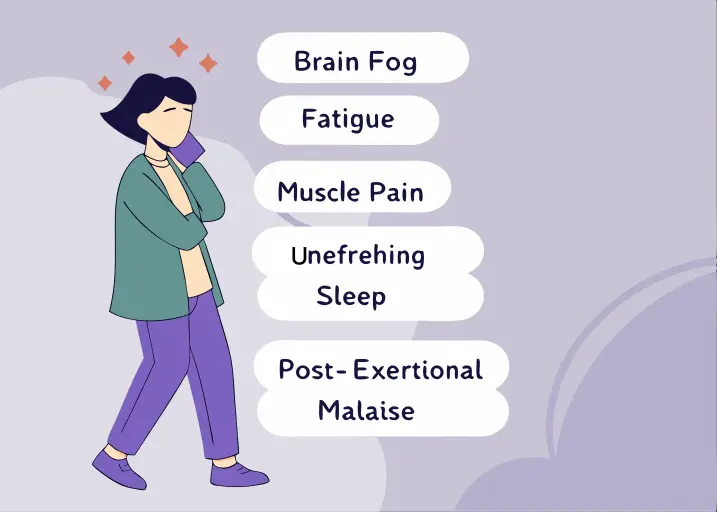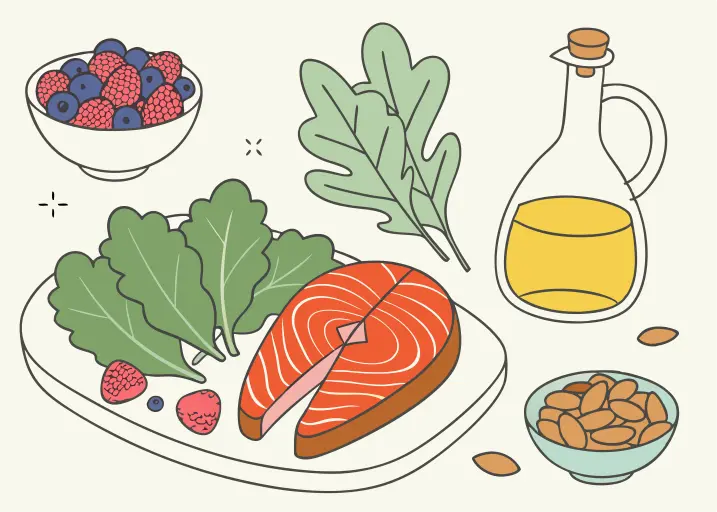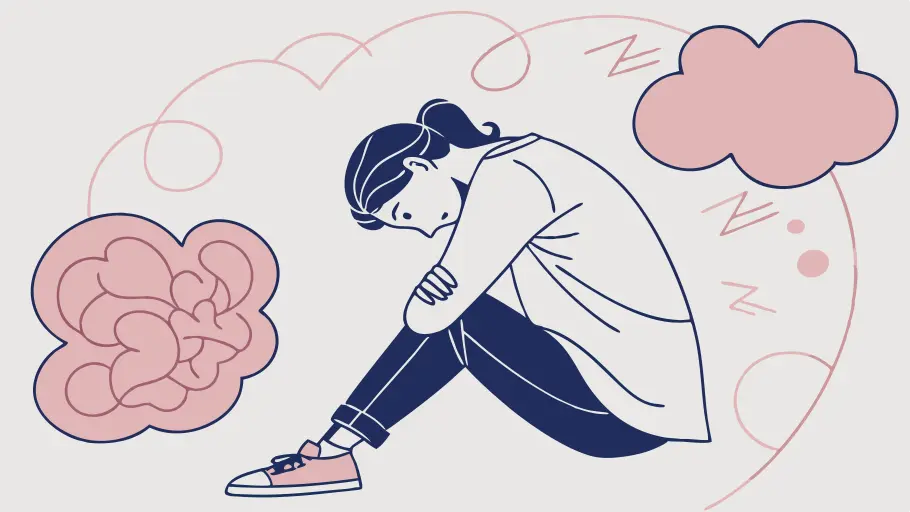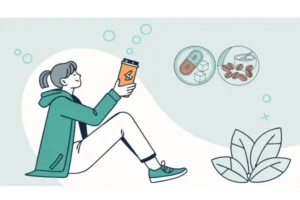Table of Contents
You’ve done everything right – early bedtime, no caffeine after 2 PM, blackout curtains. Yet you’re still dragging through each day on fumes.
Here’s the truth: there’s a big difference between ordinary tiredness and true fatigue. One rebounds after rest – the other persists despite your best efforts.
What’s the Link Between Inflammation and Fatigue?
Your body is remarkably intelligent. When something’s off – whether fighting an infection or managing stress – it triggers inflammation as a defense mechanism. Think of it as your internal security system.
But here’s where things get interesting: those inflammatory messengers (called cytokines) don’t just stay put. They travel to your brain and mess with your energy controls. These troublemakers can reprogram your brain to conserve energy, leaving you feeling depleted.
When inflammation becomes chronic – which can happen with ongoing pain conditions – your body gets stuck in this low-power mode. It’s like someone dimmed your internal lights and forgot to turn them back up.
Common Signs Your Fatigue Might Be Inflammation-Related
Not sure if inflammation is behind your energy crash? Look for these telltale signs:
You feel tired even after good sleep
This isn’t your standard “I stayed up too late” tiredness. This is the “I slept 8 hours and still feel exhausted” kind of depletion.
Brain fog, low mood, or trouble focusing
Can’t remember where you put your keys for the third time today? Research shows that inflammatory molecules can disrupt thinking and memory processes, creating that frustrating cotton-brain feeling.
Muscle soreness without a workout
Waking up feeling like you ran a marathon when the most strenuous thing you did yesterday was reach for the TV remote? Inflammation might be the culprit.
Symptoms worsen after minimal exertion
If making breakfast leaves you needing a nap, your body might be caught in what researchers call post-exertional malaise – a hallmark of inflammation-related fatigue.

4 Simple Ways to Reduce Inflammation and Reclaim Your Energy
Ready to fight back against inflammation and reclaim your energy? Here’s how to turn down the inflammatory heat without disrupting your busy schedule:
1. Eat More Anti-Inflammatory Foods
What you put on your plate can either fuel or fight inflammation.
Your new best friends:
- Fatty fish (salmon, mackerel) packed with omega-3s
- Colorful berries (nature’s antioxidant bombs)
- Leafy greens and cruciferous veggies
- Olive oil, avocados, and nuts for healthy fats
What to avoid:
- Ultra-processed foods with mile-long ingredient lists
- Added sugars that spike inflammation
- Foods known to trigger fatigue
Consider adding foods that improve mitochondrial function – your cells’ energy factories – to get even more benefit from your dietary changes.

2. Move Gently but Consistently
When you’re exhausted, exercising sounds about as appealing as a root canal. But here’s the catch-22: the right kind of movement actually fights inflammation.
The key word is “right”:
- Daily walks (even short ones count)
- Gentle yoga or stretching
- Low-impact exercises designed to boost energy
What to avoid: High-intensity workouts that might temporarily spike inflammation when your reserves are depleted.
Remember, consistency trumps intensity when fighting inflammation-related fatigue.
3. Sleep Smarter, Not Just Longer
Inflammation and poor sleep create a vicious cycle – each making the other worse. Break the loop with these sleep upgrades:
- Set a consistent sleep-wake schedule (yes, even on weekends)
- Create a true wind-down ritual (no screens, dim lights, cool room)
- Consider the perfect nap length for a daytime recharge
- Try magnesium-rich foods like pumpkin seeds or spinach before bed – they’re natural relaxants
Pro tip: If afternoon fatigue hits regularly, examine your lunch choices and midday habits instead of just powering through.

4. Support Your Gut Health
Plot twist: much of your body’s inflammation starts in your gut. Scientists have discovered that digestive inflammation can trigger system-wide fatigue even without obvious digestive symptoms.
Give your gut what it needs:
- Fiber-rich foods that feed beneficial bacteria
- Probiotic foods like yogurt, kimchi, or kombucha
- Proper hydration to support energy levels
Cut back on:
- Artificial sweeteners that disrupt gut bacteria
- Excessive alcohol that irritates the gut lining
Some people find that tracking how blood sugar affects their energy levels provides valuable insights into their inflammation patterns.

When to Talk to a Doctor
DIY approaches are valuable, but sometimes you need professional guidance. Consider medical help if:
- Your fatigue has lasted more than two weeks despite making changes
- You have an autoimmune condition like rheumatoid arthritis or lupus, which have strong links to inflammation-driven fatigue
- You’re experiencing unexplained weight changes, persistent pain, or fever
- Your fatigue started after a viral illness and hasn’t improved
Don’t let anyone dismiss persistent fatigue as “just stress” or “being busy.” It could signal underlying causes of low energy that deserve proper attention.
Bottom Line
A little tiredness is part of modern life – but persistent fatigue that doesn’t improve with rest isn’t something to power through with another coffee or energy drink.
By making targeted changes to reduce inflammation, you’re not just fighting fatigue – you’re upgrading your entire operating system. For many people, starting with an energizing morning routine or getting more daily sunlight can kickstart the process.
When you need immediate relief, consider quick energy fixes that don’t involve caffeine. Some people find supplementing with natural electrolytes or liquid vitamin B12 helpful, though addressing the root inflammatory causes remains most important.
Start small. Be consistent. Your future, more energetic self is waiting.





